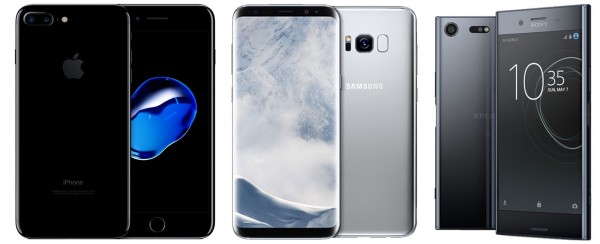 There’s a video roaming the internets, as it were, that’s all about speed! Whenever a Samsung product is launched, we tend to hear a lot about specs as if it were 2003, the golden age of PCs. We hear the number of cores, the amount of RAM, how many warp drive coils, and the megapixel count the product offers as if each of those specs define the product. But as you and I know, a higher megapixel counts doesn’t always translate to better photos and more cores don’t mean a faster phone.
There’s a video roaming the internets, as it were, that’s all about speed! Whenever a Samsung product is launched, we tend to hear a lot about specs as if it were 2003, the golden age of PCs. We hear the number of cores, the amount of RAM, how many warp drive coils, and the megapixel count the product offers as if each of those specs define the product. But as you and I know, a higher megapixel counts doesn’t always translate to better photos and more cores don’t mean a faster phone.
As for the speed test, it pits the Samsung Galaxy S8 against the LG G6, Google Pixel, OnePlus 3T, and the iPhone 7 Plus.
So what’s missing from this video? How about the Sony Xperia XZ Premium, which was announced two months ago? The problem, of course, is that Sony often announces products at trade shows like CES/MWC which don’t often line up with their own product release. This means that by the time the Xperia XZ Premium drops, we’ll have known about it for 5 months – which is insane. This runs counter to iPhone and Galaxy releases, which are announced when they’re ready, instead of when a tech event is taking place.
But what’s even worse – and stop me if you’ve heard me say this before – is that by the time the XZ Premium arrives, will anybody, outside of hardcore Sony owners, care?
It’s absolutely ludicrous that a phone announced in February isn’t coming out until June, and the video above showcases that – a comparison test between the best smartphones on the market, and Sony isn’t even in the conversation. For all we know, the Xperia XZ Premium could be the fastest of the bunch. And if not that, wouldn’t it have been great to see the XZ Premium beat out the Galaxy S8? But for Sony, that comparison is never going to take place and guaranteed that nobody, in two months’ time, when the XZ Premium does drop, is going to go back and create a video like that.
In two months’ time, those who were excited about the Galaxy S8 will have bought one and everybody else will be gearing up for a fall iPhone launch, leaving Sony with nothing. It’s frankly sad and disheartening for those working in engineering at Sony to know that they’re not even in the conversation.
For those curious about why there’s such a speed difference between the products, Rene Ritchie at iMore has a fantastic writeup on the whole thing that’s definitely worth your time. Here’s a snippet from it:
Feature sets are more important than chipsets. Apple never shipped NFC, it shipped Apple Pay. Likewise, specs and benchmarks don’t matter anywhere nearly as much as user experience. But it’s still the chipsets that enable those features and ensure that experience.
One of the most fascinating aspects of all the attention being paid to iPhone 7’s performance in benchmarks relative to the Galaxy S8 is that it’s incidental — a circumstance of great design and singular philosophy.
For A10 Fusion, pushing maximum performance on bigger cores meant leaving a gap on the low end. Pairing the high-performance cores with high-efficiency cores, and creating a performance controller to intelligently manage the switching all-but-invisibly, eliminated that gap. That controller gave Apple not only the best of both processing worlds, but a significant advantage over chipsets lacking those smarts.
For the graphics cores, Apple uses a different, “wide and slow” approach. They can handle loads as efficiently as possible but that also gives them the headroom to handle spikes when they need to.

You must be logged in to post a comment.